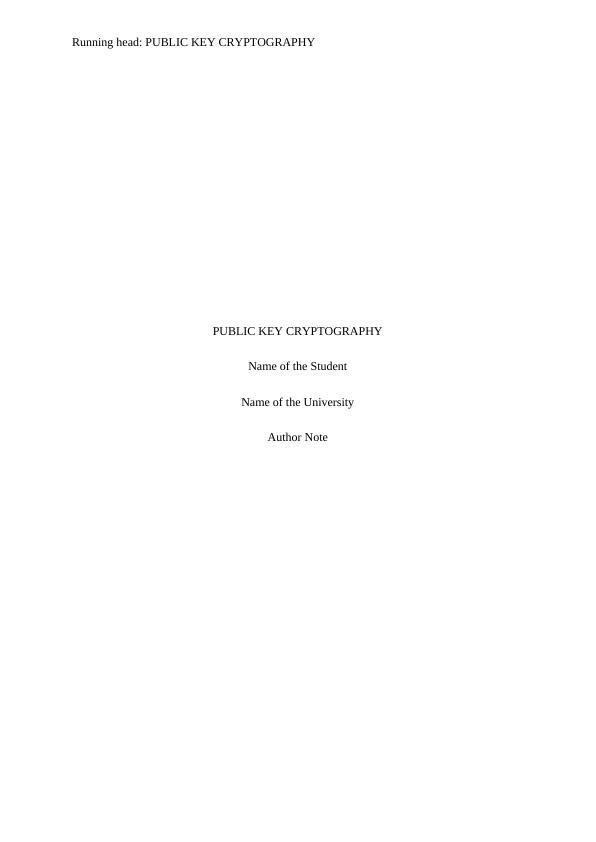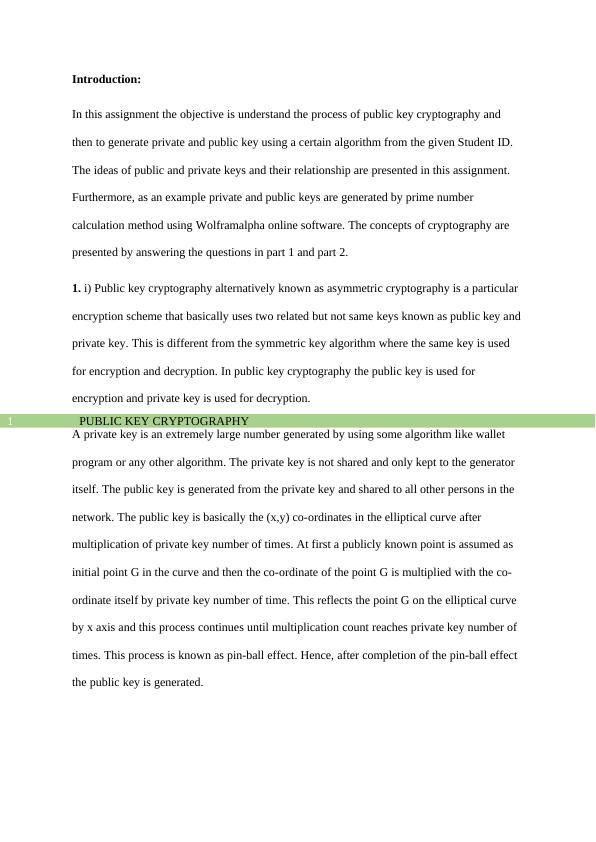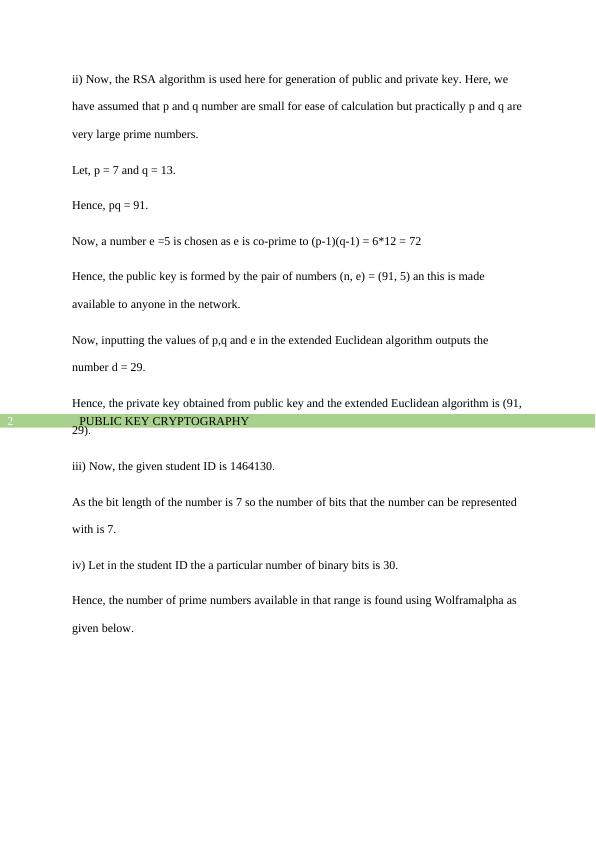Public Key Cryptography - Understanding the Process and Generating Private and Public Key
Marking rubric for BIT 112 Mathematics for IT Assignment 1, evaluating mathematical understanding and application.
12 Pages1302 Words435 Views
Added on 2022-11-23
About This Document
This assignment explains the process of public key cryptography and generates private and public key using a certain algorithm from the given Student ID. It also presents the concepts of cryptography by answering the questions in part 1 and part 2.
Public Key Cryptography - Understanding the Process and Generating Private and Public Key
Marking rubric for BIT 112 Mathematics for IT Assignment 1, evaluating mathematical understanding and application.
Added on 2022-11-23
ShareRelated Documents
End of preview
Want to access all the pages? Upload your documents or become a member.
Cryptography Basics I Assignment
|7
|644
|13
Symmetric Encryption Assignment
|5
|884
|175
RSA Encryption: Understanding the Algorithm and its Implementation
|3
|712
|346
Cryptography and Key Generation using RSA Algorithm
|4
|766
|307
Ciphers are used here for a better performance
|9
|2746
|44
Using DES with Cipher Block Chaining to Send a Message to Alice
|3
|1047
|51




